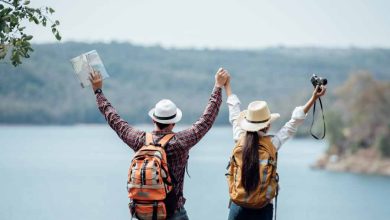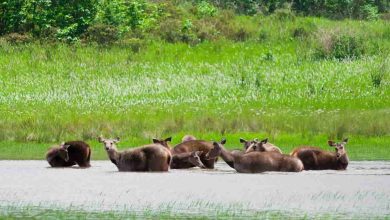To discover the unknown and unseen is what travelling is all about. Walking amidst poisonous plants and traversing through the wilderness is something that every wanderer aspires to. Where every next step is filled with surprises from nature, the Sandakphu Trek is the perfect expedition for adventure enthusiasts. Located in West Bengal, it is at an elevation of 11,930 feet. Being the highest point in the state, Sandakphu is so much about its mystical charm.
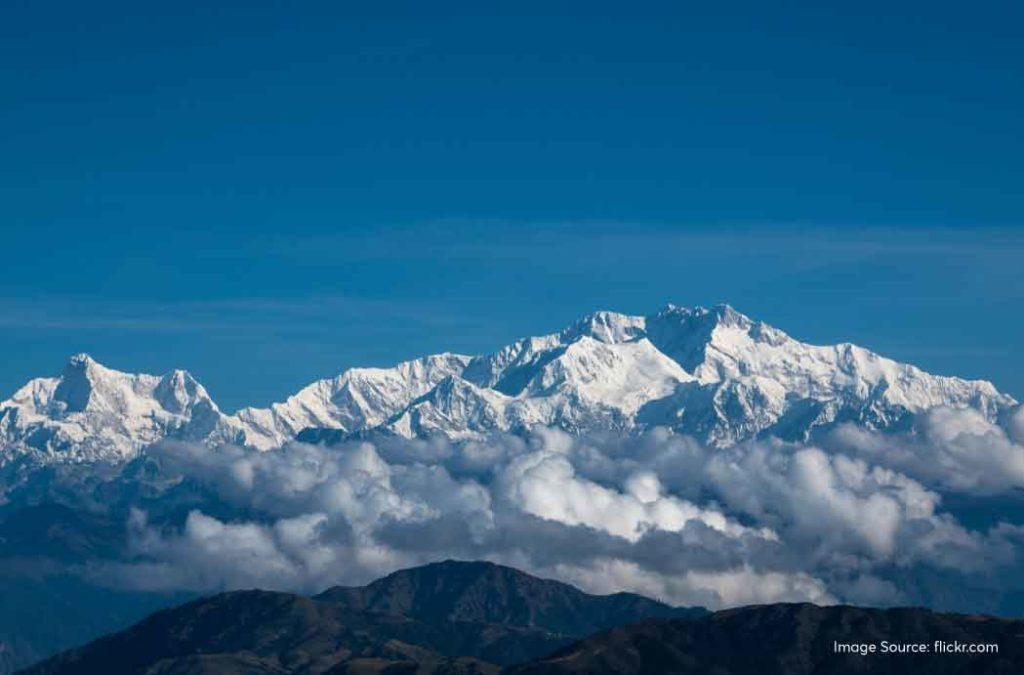
Only a few treks in India introduce you to the mesmerising stories of the bygone era. Sandakphu Trek does just that for you! It is one of the only places where you can witness Mount Everest, Mt. Kanchenjunga, Mt. Lhotse and Mt. Makalu from the top. These are literally the highest peaks that travellers aspire to conquer. Hence, witnessing them with your naked eyes is truly magical.
Sandakphu Trek: What Makes It Extraordinary?
Popularly known as the Sleeping Buddha, it is believed that Buddha looks over the mountain range. It is also believed that Buddha protects the nearby destinations with his presence on the hills. Mt. Kanchenjunga is the head part of the Buddha. The other mountain ranges complete the silhouette with their sharp peaks adding to the resemblance of the Buddha.
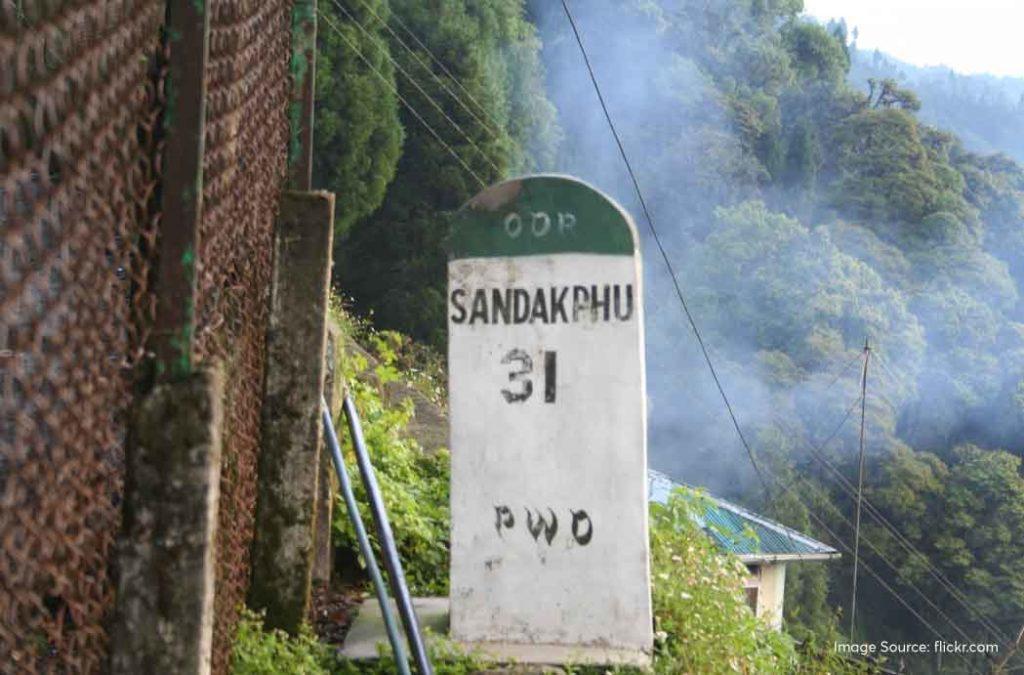
What makes it an interesting journey is its strategic location. The Sandakphu Trek is a shared expedition between the borders of India and Nepal. With no restrictions, you can literally step into Nepal and conquer the summit. Apart from this, you get to witness many Nepali and Tibetan communities on the top. The expedition is a surreal blend of adventure, serenity and an essence of spirituality! So, let’s discover complete details about the Sandakphu trek route.
Sandakphu Trek Route: Details and Day-Wise Plan
The Sandakphu Trek is one of the most beautiful expeditions in the Eastern Himalayas. While the altitude may not be very high, you are certain to get awe-inspiring views of the highest mountains from here. So, get ready to understand the Sandakphu trek route only to better prepare yourself for the journey. Note that there are different starting points for the trek; however, the below-mentioned route is the most popular route chosen by travellers.
Day 1: Head to Manebhanjan
Are you ready to begin an exciting expedition to witness the highest mountains? If yes, straightaway head to Manebhanjan. It is a small town, which is also the starting point for many trekkers.
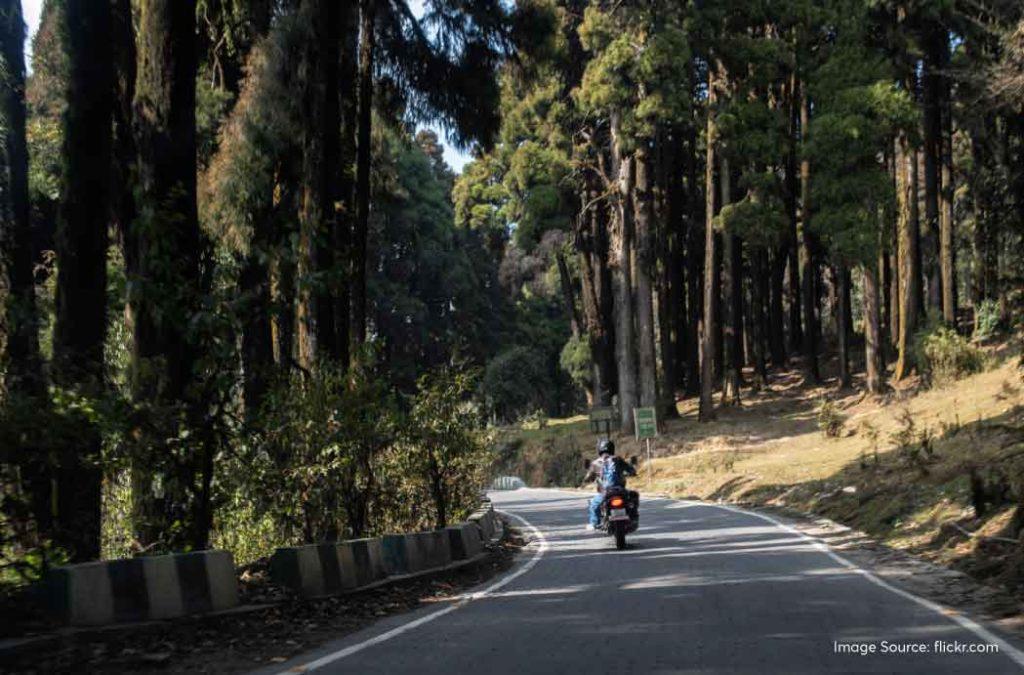
What’s more? Manebhanjan is located on the border of India and Nepal, allowing you to witness a blend of different cultures. The small village is surrounded by a peaceful atmosphere, a few houses and traditional architecture. It is also the point where you can get help from local guides to navigate your way further.
Day 2: Trek from Manebhanjan to Tumling
The Sandakphu trek itself involves many other treks as you slowly move towards higher altitudes. It is important to utilise enough days as it helps with acclimatisation. After all, you would not wish to experience acute mountain sickness. The trail is a bit challenging also because this is the first leg of the journey.
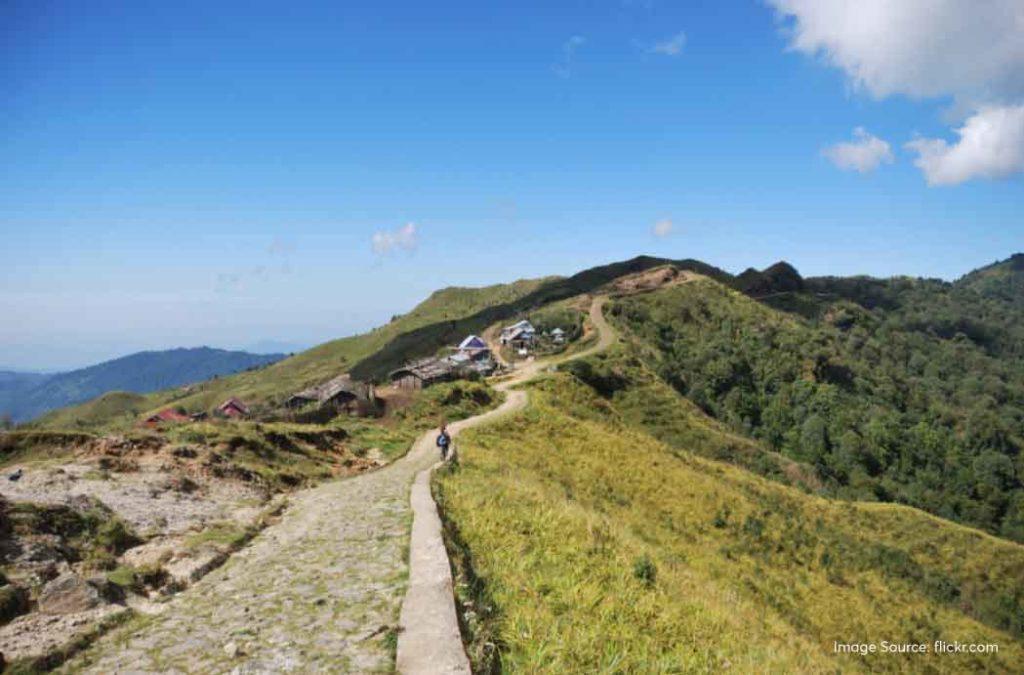
It is approximately an 11-kilometre trek, taking you through dense forests, magical hills and the unseen beauty of nature. It then reaches the Chitrey village, where you can take a short break. The path ahead is characterised by rhododendron trees and mountains named Lamedhura and Meghma.
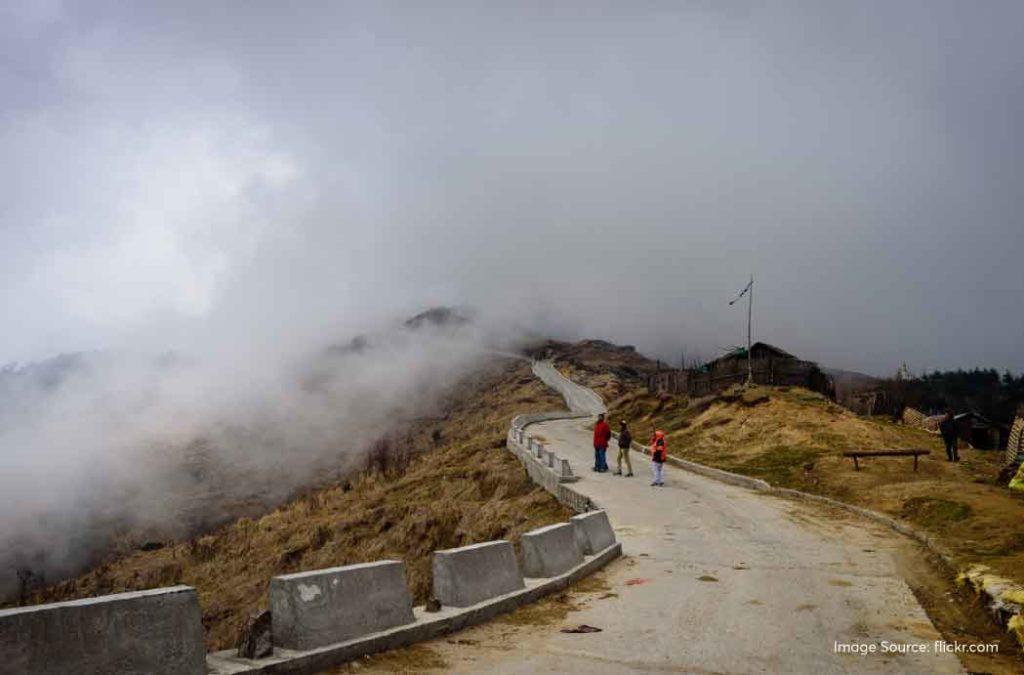
Just like jaw-dropping valleys in India, you can notice a beautiful valley here. Interestingly, Lamedhura village is located between the borders of India and Nepal. Guess what? You do not need a permit to buy snacks from the stalls in Nepal. All you need to do is step on the other side and you’re in Nepal! It is indeed interesting because you can find local alcoholic beverages made with flowers. It is popularly known as Roxy.
Now is the time to head to Tumling, which is actually a part of Nepal. Wondering how to stay in Tumling? You need not worry because Indians do not need a permit to stay in Tumling. In fact, you might not even realise the moment you cross borders. So, enjoy this free zone where you are literally walking amidst the mountain ranges of two countries.
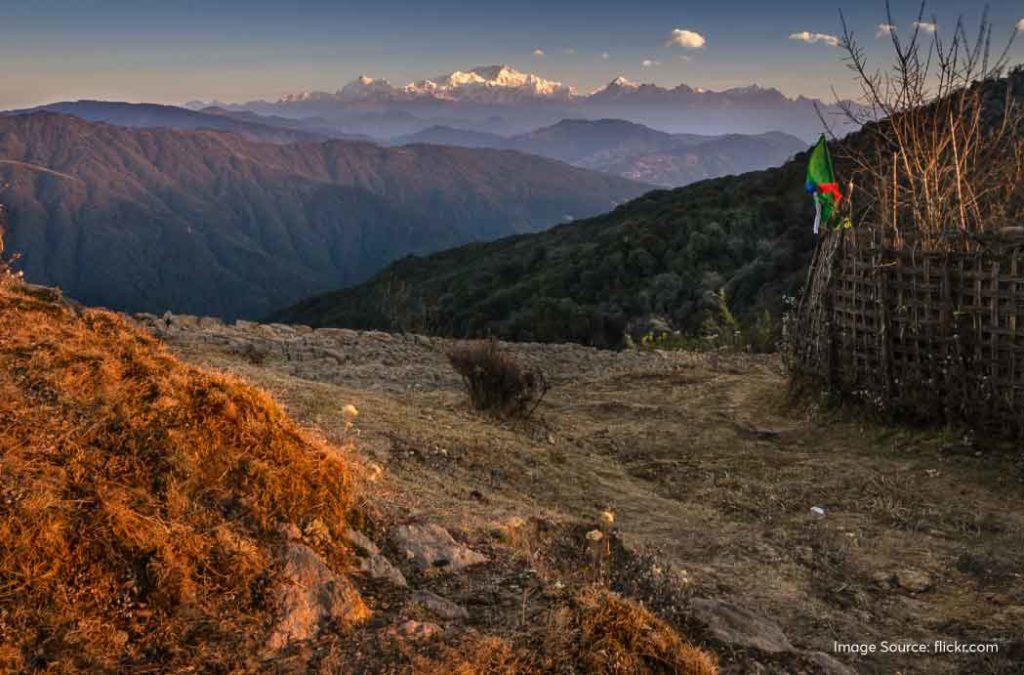
After reaching Tumling, you are certain to sense comfort and solace as the village hardly has human settlements. Known for its tea houses and stunning views, this is the place for a good rest. You can find a few homestays with basic amenities. If you are lucky, you can easily witness the Kanchenjunga peak from here.
Day 3: Tumling to Kalipokhri
It is now time to trek towards Kalipokhri, the second last phase of the expedition. Situated at 10,400 feet, Kalipokhri is named after a small black lake. As you begin your journey, you come across lush meadows and serene views of the faraway lands. This is the phase where you enter the area of Singalila National Park.
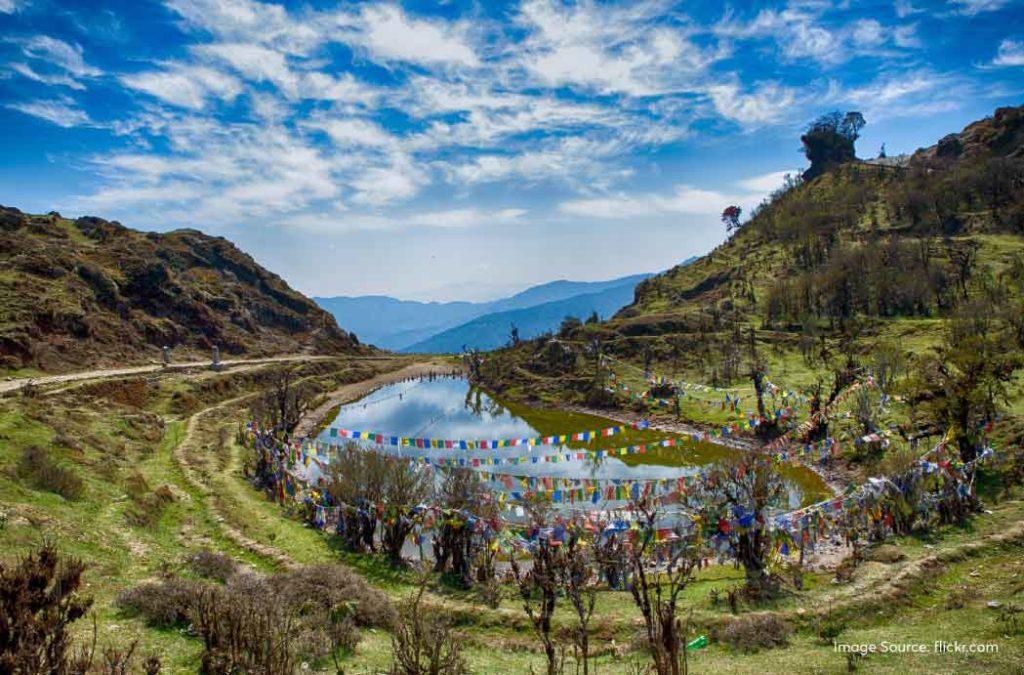
Known for its rich biodiversity, the path is all about dense vegetation and animals. It is also home to several rare species of birds, including blood pheasants. The area is best known for the exotic red panda, which you may be able to spot only if you are too lucky!
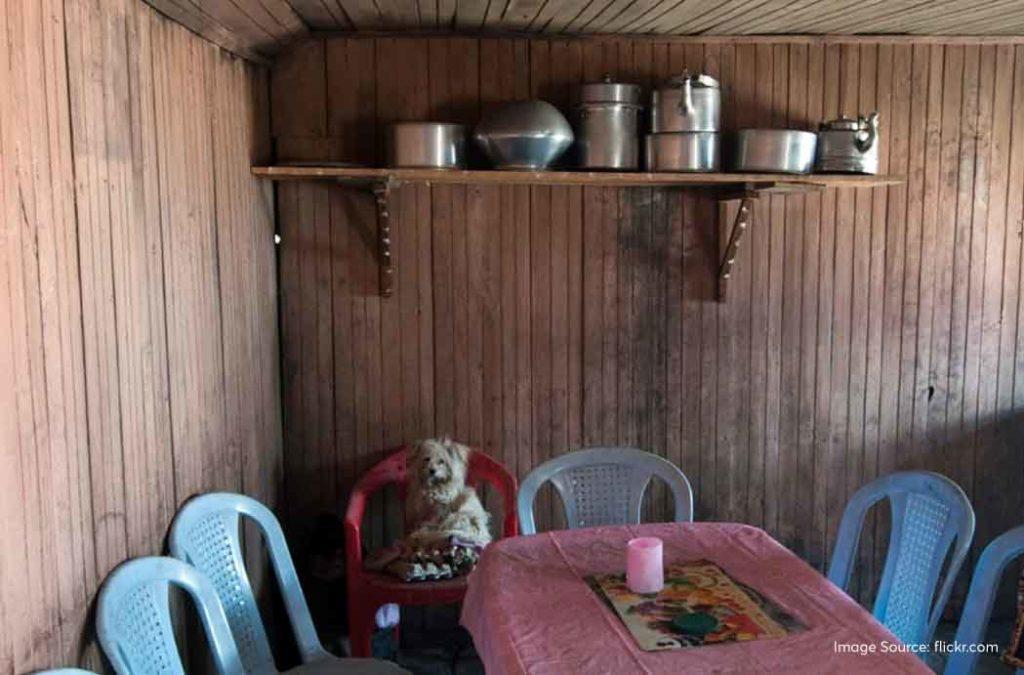
You then reach the village of Gairibas and the trail is a bit easy here. It is more like a relaxing ascent with closer views of the sleeping Buddha. Moving ahead, you can spot the difference in terrain and the ascent. Immerse in the beautiful trail surrounded by rhododendrons and bamboo trees. You can then find a few refreshment stalls as you move towards higher altitudes.
After reaching, get ready to witness the idyllic views of the black lake surrounded by prayer flags. You might also get an opportunity to strike up conversations with the Tibetan settlement. The hike is surely a strenuous one, so you must rest in a nearby homestay. Certain places also provide camping opportunities and you might just love stargazing in India during clear skies!
Day 4: Kalipokhri to Sandakphu
The thrill is here! It is now the final phase of your Sandakphu expedition. As you move from Kalipokhri, you can experience a smooth trail in the beginning. Surrounded by thick vegetation, the trail is all about witnessing the beauty of mountains. The real challenge begins in Bikheybhanjang as the terrain gets tricky. Interestingly, this destination is also known as the Valley of Poison. It is home to the dangerous plant named aconite, thereby giving this name to Bikheybhanjang.
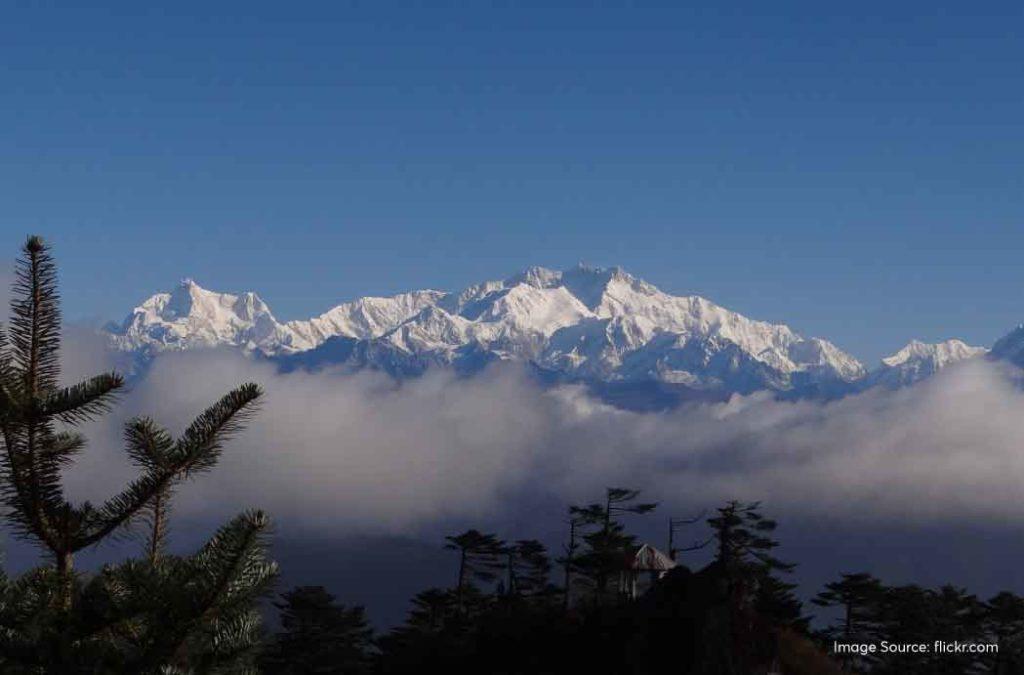
The trail is now all about zigzagging through rugged terrain. It surely tests your endurance as you climb towards high altitude. After the physical strain, you finally complete the Sandakphu trek. You now get a 360° view of the tallest mountain ranges. Praise yourself for staying strong throughout the journey. Upon touching the land of Sandakphu, you are certain to feel a sense of contentment and victory. You can choose to stay here before preparing for the descent.
How To Reach the Starting Point of Trek?
As there are various starting points of the trek, it depends on your travel approach. However, the below-mentioned ways can be helpful to navigate your journey through Darjeeling.
By Air
Bagdogra Airport is the nearest air route located at a distance of 82 kilometres from Manebhanjan. You can easily take a shared jeep or a private cab from here.
By Rail
New Jalpaiguri Railway Station (NJP) is one of the nearest railway routes to Manebhanjan. It is located at a distance of 85.4 kilometres. You can also opt for Siliguri Railway Station, located at a distance of 77 kilometres from the Manebhanjan village. Most travellers opt for NJP as you can easily get shared cabs for the base camp.
By Road
If you are planning to travel via road, it is best to first arrive in Darjeeling. It is the nearest city with a good road network that helps you for the Sandakphu trek. You can drive to Manebhanjan or hire a taxi from Darjeeling. Similarly, you can opt for shared cabs leading to the Manebhanjan base camp. If the journey gets too tiring, it is best to book one of the affordable hotels in Darjeeling before the expedition. After all, you need the right amount of strength and energy for the hike.
Best Time To Do Sandakphu Trek
The Sandakphu trek takes you to glittering heights as you get to witness the glory of beautiful mountain ranges. Hence, it is super important to choose the time that best suits your travel preferences. As Sandakphu experiences cool weather throughout the year, you can choose the season that is in accordance with your cold-bearing capacity.
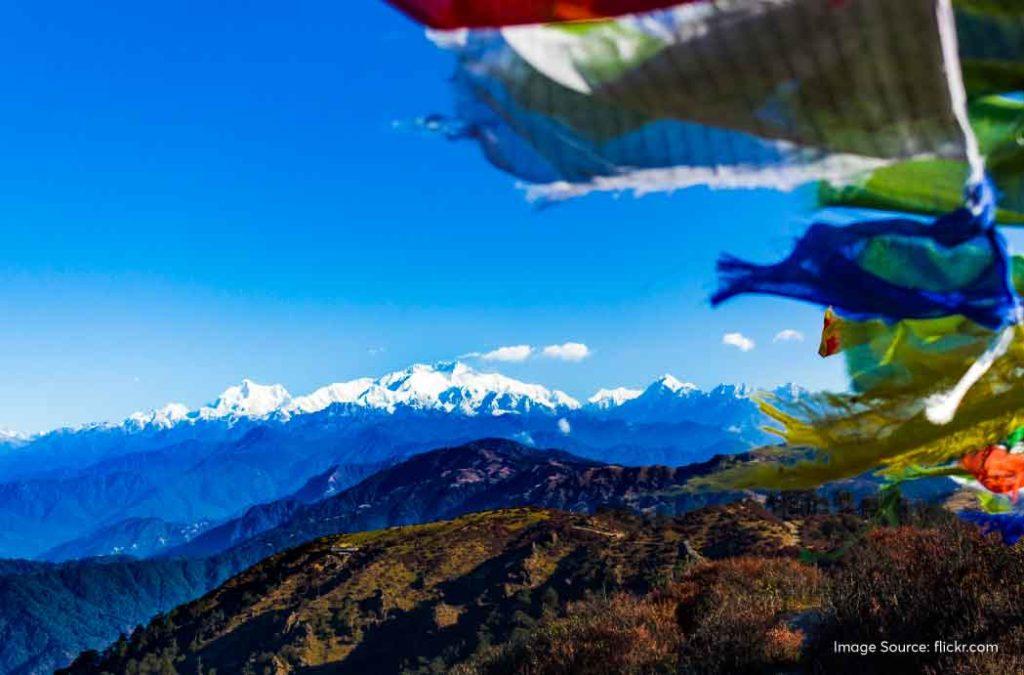
It is important to note that Sandakphu experiences heavy rainfall during the monsoon months. The rainfall begins from May end and lasts till September. It is not advisable to trek during the monsoon season particularly due to challenging slippery terrain.
Spring (March to May)
If you are looking for a comfortable time to trek, spring is the best season for you. The temperature ranges between 8°C to 20°C, making it pleasant for adventure seekers. Moreover, the paths are adorned with rhododendrons and other flowers around. It is best to opt for early March, as Sandakphu might experience rainfall during April. So, get ready to enjoy the colourful spectrum of nature like never before!
Autumn (October to November)
Autumn is another best time for the Sandakphu trek if you love snow-capped pathways. Unlike the Western Himalayas, it is located at a relatively lower altitude, making it easy to climb. The temperature ranges between 8°C and 12°C during the day. However, it can drop to -5°C during the night.

What makes autumn a beautiful time is that there is little to no rainfall. Moreover, monsoon rains wash off the dust and pollution in the sky. So, get ready to witness clear views of the majestic mountains. The air is clean with minimal humidity. It is absolutely an amazing time to get unobstructed views of the hills.
Winter (December to February)
Winter is a great time for the Sandakphu trek if you are a seasoned trekker and love extreme winter conditions! The entire range is filled with snow-covered landscapes. So, if you are seeking solitude with incredibly rewarding views, this is the time to be! The temperature ranges between 2°C and 6°C during the day. However, the temperature can drop to -10°C during the night.
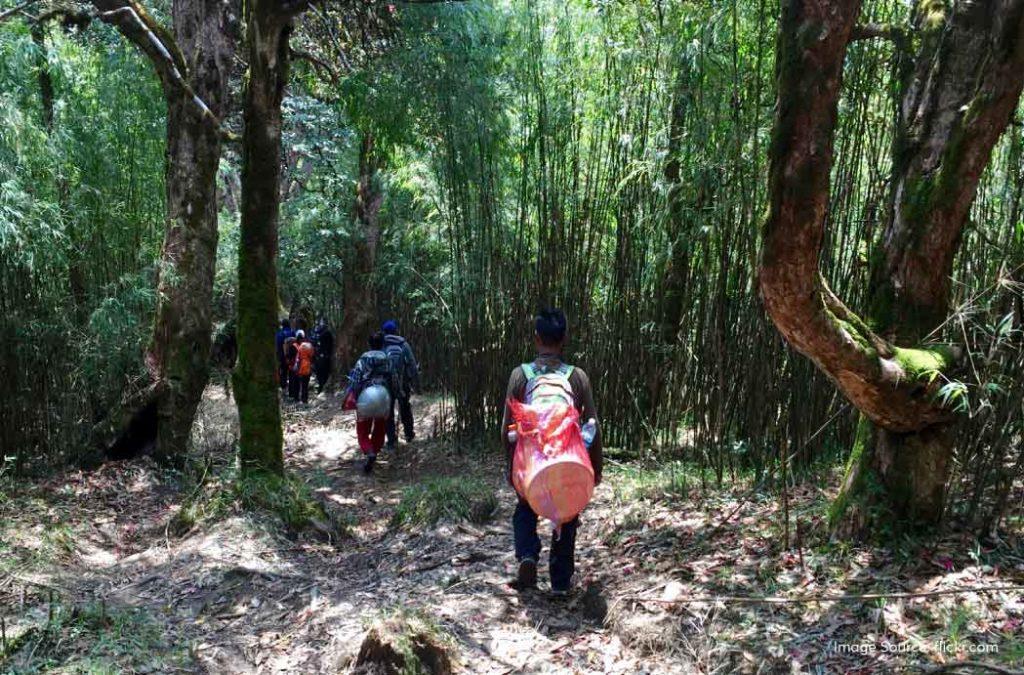
You can definitely witness snow-capped mountains with relatively clear skies during the daytime. You might experience cloud cover that reduces visibility; however, it is occasional. For trekking in winter, you need proper equipment, as the trail can be hard to navigate in case of extreme snowfall.
Important Things To Carry for Sandakphu Trek
- Layered clothing, including thick jackets, thermals and warm clothes
- Quick-dry t-shirts
- High-quality rain jacket
- Woollen gloves and socks
- High-end trekking shoes
- Flip-flops or sandals (for rest)
- A 40 or 50-litre trekking backpack
- Trekking pole
- Headlamp and torch with extra batteries
- Power bank
- Sleeping bag
- Water purification tablets
- First-aid kit
- Sunscreen
- Anti-blister tape
- Energy bars and nuts
- Plastic bags
- Toiletries as needed
Essential Tips for the Sandakphu Trek
- The Sandakphu trek requires extreme physical strength and breathing practice. It is best to indulge yourself in leg workouts, cardio and hikes before opting for this.
- Carry a sturdy trekking backpack with all the essentials as the trek is located in a remote area.
- Expect a basic homestay with local food, including eggs and maggi.
- Stay hydrated throughout the trek to avoid sudden dehydration during the journey.
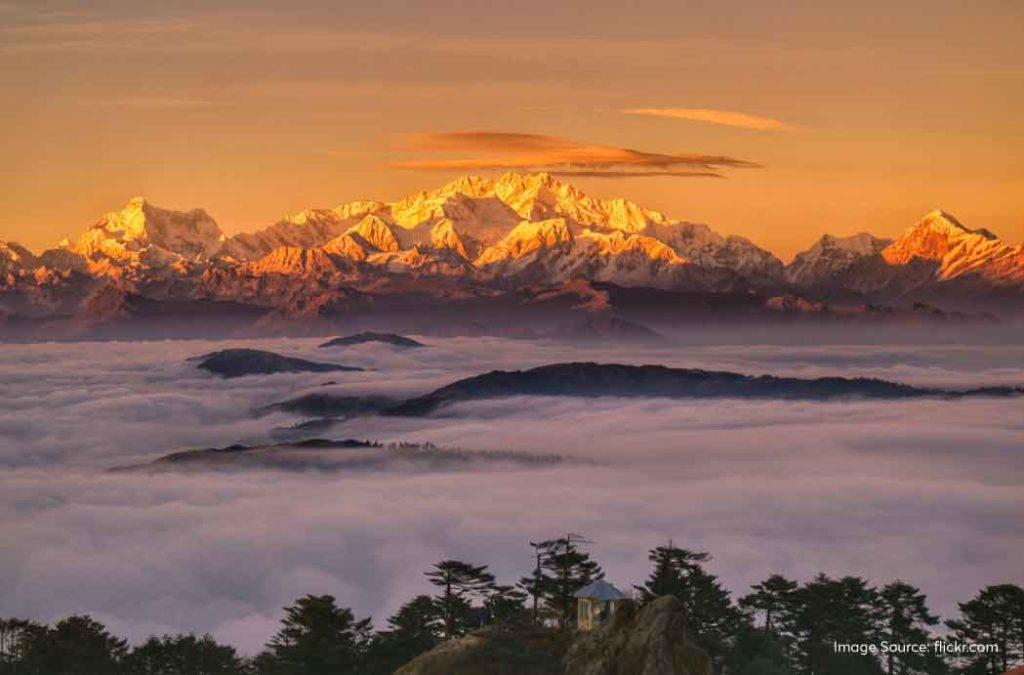
- You are most likely to encounter people from Nepal entering the Indian stalls for alcoholic drinks and local beer. It is best to continue your journey without getting involved in their everyday routine.
- You need to obtain a permit from the tourism office in Manebhanjan as you shall be entering the protected zone of Singalila National Park.
- It is recommended to carry sufficient cash as digital payments and ATM facilities are not accessible here.
- You might face mobile and internet connectivity problems, so be prepared for that.
Here Is Your Trekking Pole!
Locking your eyes at the sight of the tallest mountains is something that words cannot express. The sudden rush of adrenaline combined with euphoria is just the dose you ever need. Traversing through the forests and waiting for each step to get closer to the hills is mesmerising. The journey itself explains to you the magic of patience, endurance and determination. As they say, you are not conquering mountains; the mountains are permitting you to conquer them!
